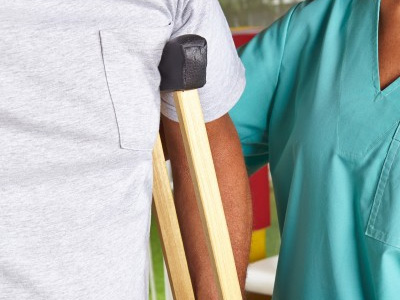Elderly people, especially women, fall quite often. And even a simple fall may cause serious injuries and fractures, which can seriously turn their life, lead to disability, immobility, dependence on others.
The sad statistics is the following!
• 60% of people older than 65 years have to stay in hospital as a result of the fall;
• 15-20% of them have fractures;
• 5-20% die from complications;
• 40% after discharging from the hospital lose their independence and become dependent on others;
But falls shouldn’t be regarded as something accidental and inevitable; we should try to prevent them.
Where the falls are most likely to occur?
50% of the cases happen at home, most often in bathrooms and bedrooms.
Nearly 80% of seniors fall without any witnesses, which deprives them of quick help.
Outside the house the falls of seniors are more likely to happen on icy sidewalks, wet pavements, while walking on icy pathways. Falling down outside the house without any witnesses of this, especially in the cold season, may lead not only to injuries, but also to hypothermia, and as a consequences of this – later development of pneumonia, urinary tract infections and other diseases.
One of the most serious and dangerous traumas caused by a fall of a senior is hip fracture. 20% of all hip fracture cases result in death from complications. Half of the seniors become incapacitated, requiring constant care.
A large portion of injuries after falling in seniors accrues to wrist fractures. The healing process takes up a lot of time, lasting from 6 weeks up to 3-6 months, and significantly restricts the ability of a person to self-maintenance.
The causes of falls among seniors may be divided into two large groups.
External causes.
External causes are related to improper organization of safe movement.
– uncomfortable shoes;
– inappropriate glasses;
– lack of mobility aids (canes, walkers);
– low home security.
Weather factors also play a significant part.
– icy or slippery pavement in winter, uneven surface of sidewalks, poor lighting, etc.
Internal causes.
The gait disorders arise at elderly and senile age, affected by neurologic and blood vessel diseases, the eyesight worsens, dementia develops. Taking some medication changes the state of vasomotor tone. The risk of falling especially increases when taking several medications simultaneously.
The risk of falling is high in people who stay in upright position less than 4 hours a day, as well as those who are unsteady when standing, who are overinhibited and depressed and those who are unable to stand up from a chair without using their hands. Age-related impaired visual acuity requires proper lens fitting.
Seniors, who often fall, should go through medical examination for exception of the following possible diseases:
– arrhythmia,
– seizure disorder,
– Parkinson disease,
– anemia,
– Weiss-Baker syndrome,
– transient ischemic attack.
Fall prevention should be performed in three main directions:
– arrangement of safe mode of life and housing;
– regular exercise to improve your muscle tone;
– checking for the side effects of the medicines you take and osteoporosis treatment.
Regardless of the factors causing the fall here are some tips helping to prevent it:
– regular physical exercises to strengthen muscles, bones and joints
– take away the things in the house, which may be conductive to falling
– keep necessary items in easily accessible places
– use non-slip flooring
– use bathroom handles and grab bars
– keep stairs and hallways well lit
– using medication, don’t forget to ask your doctor of its possible effect on the bones (if it can cause bones fragility)
– wear only comfortable shoes with non-slip sole.
And remember: it’s always easier to prevent the fall than to treat its consequences!




